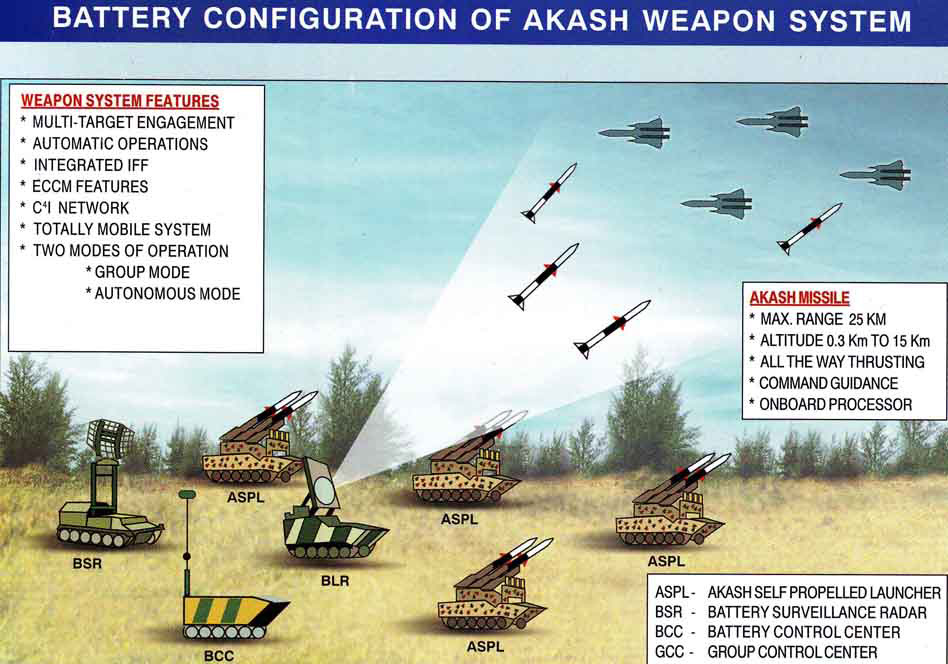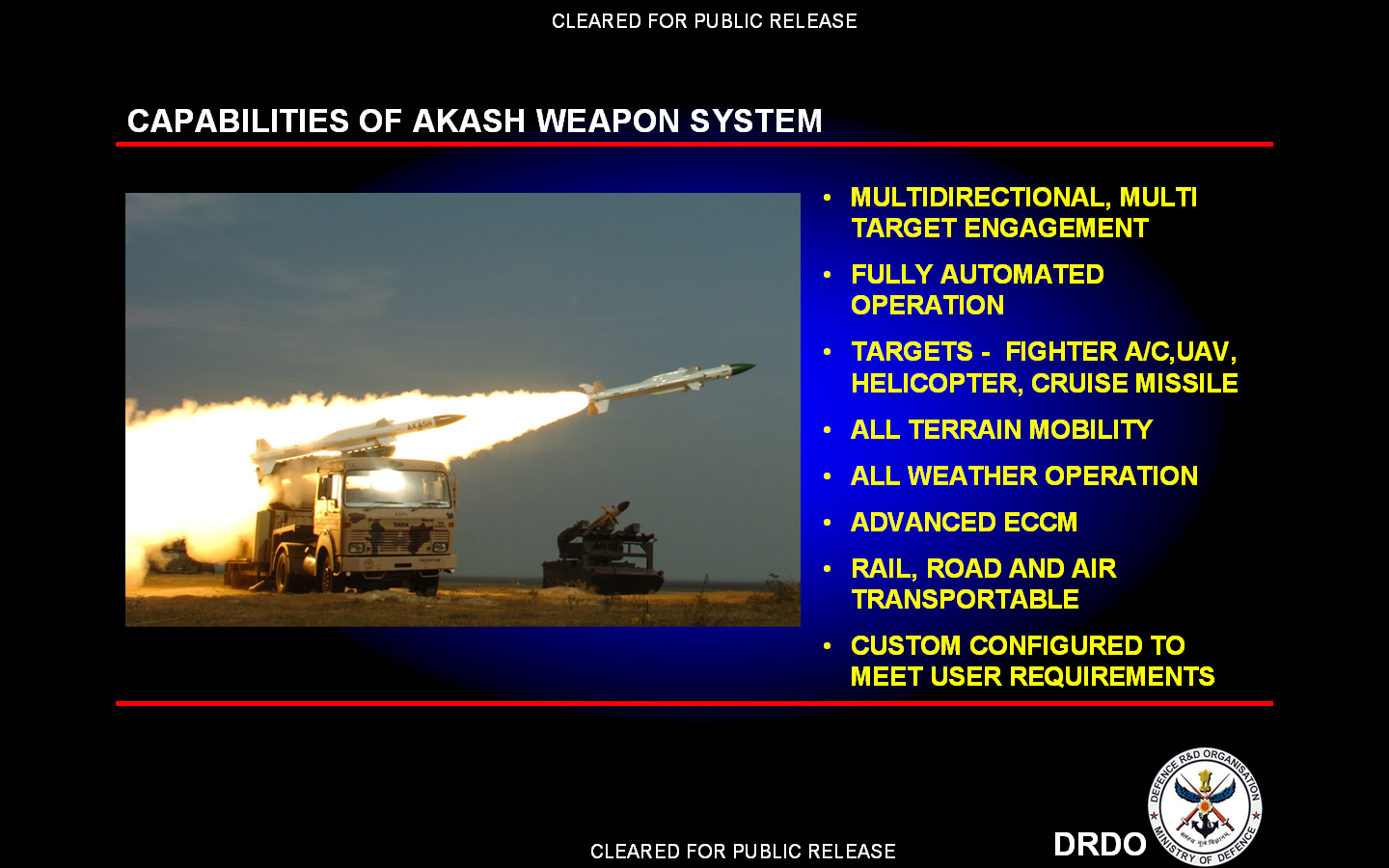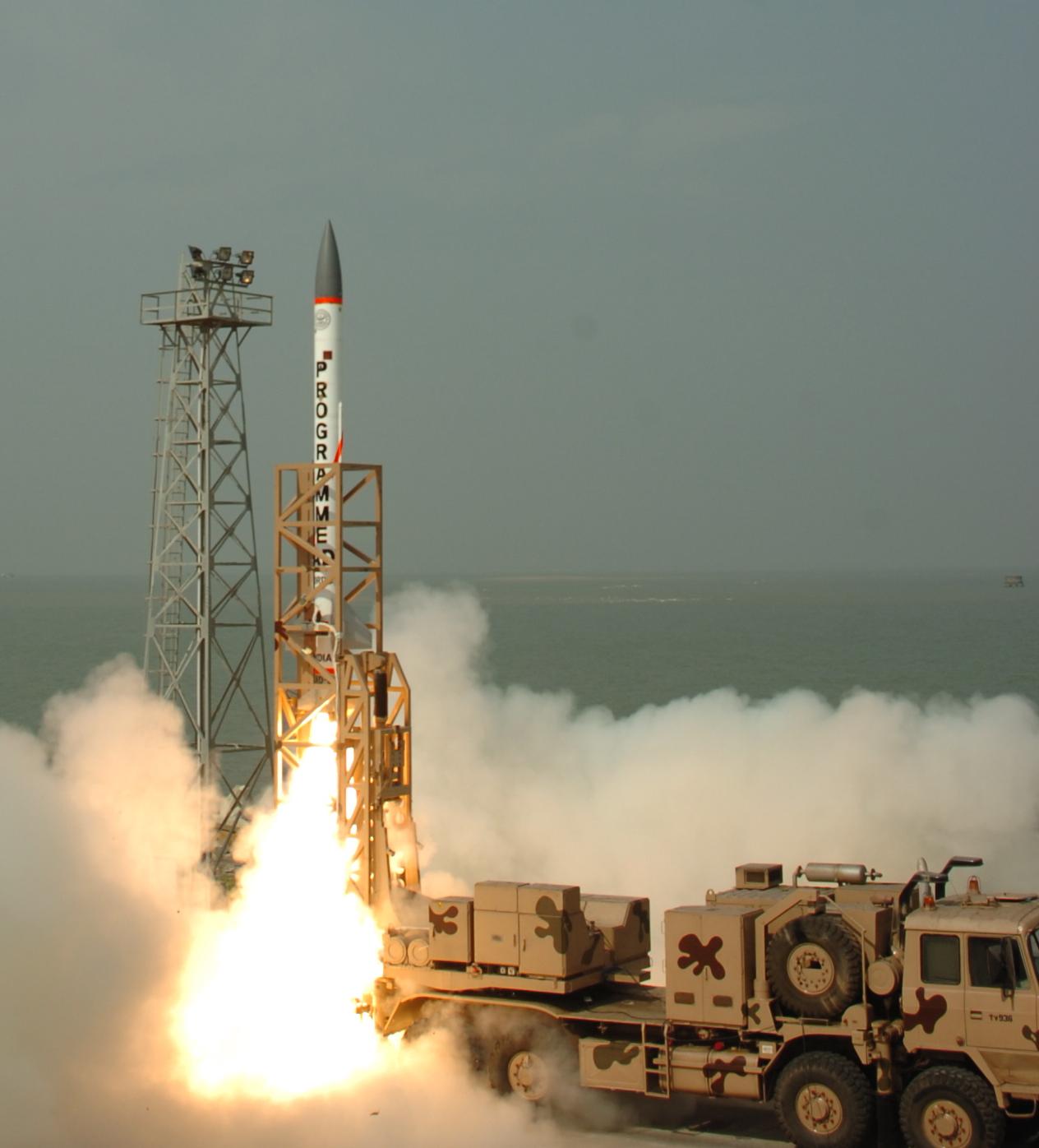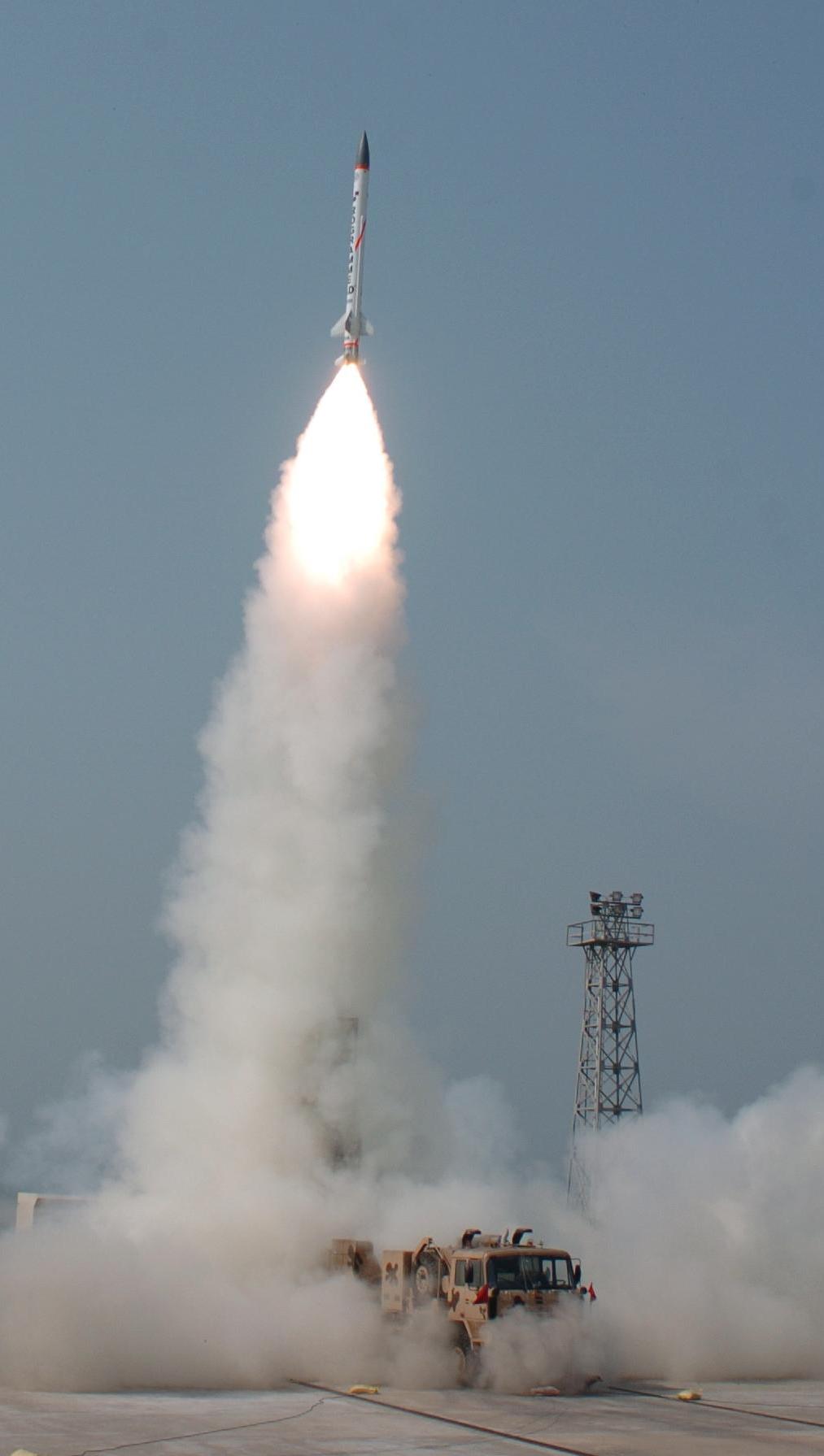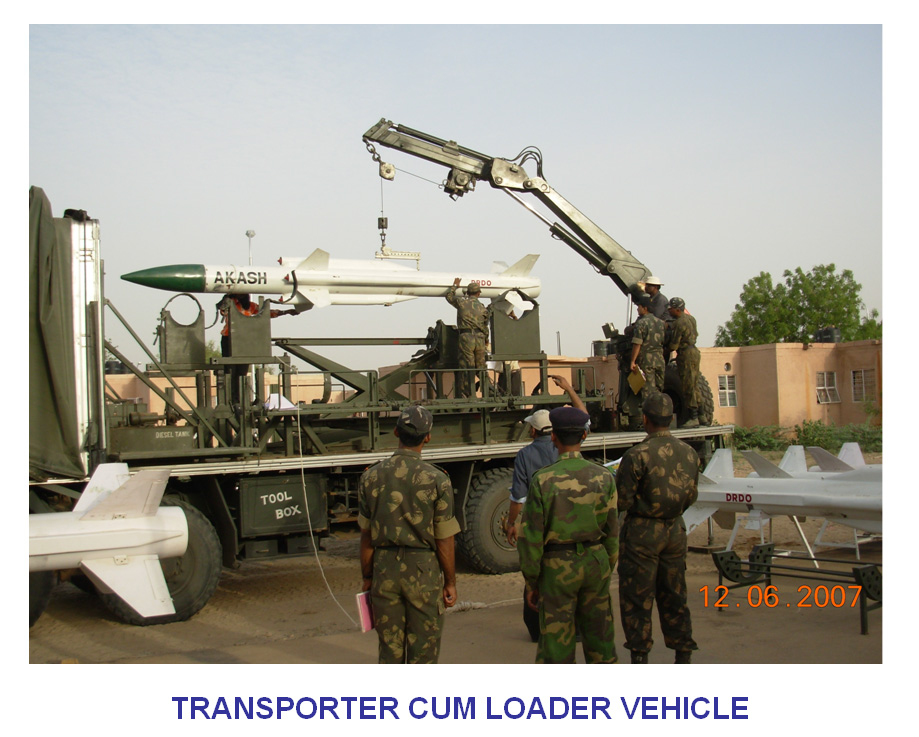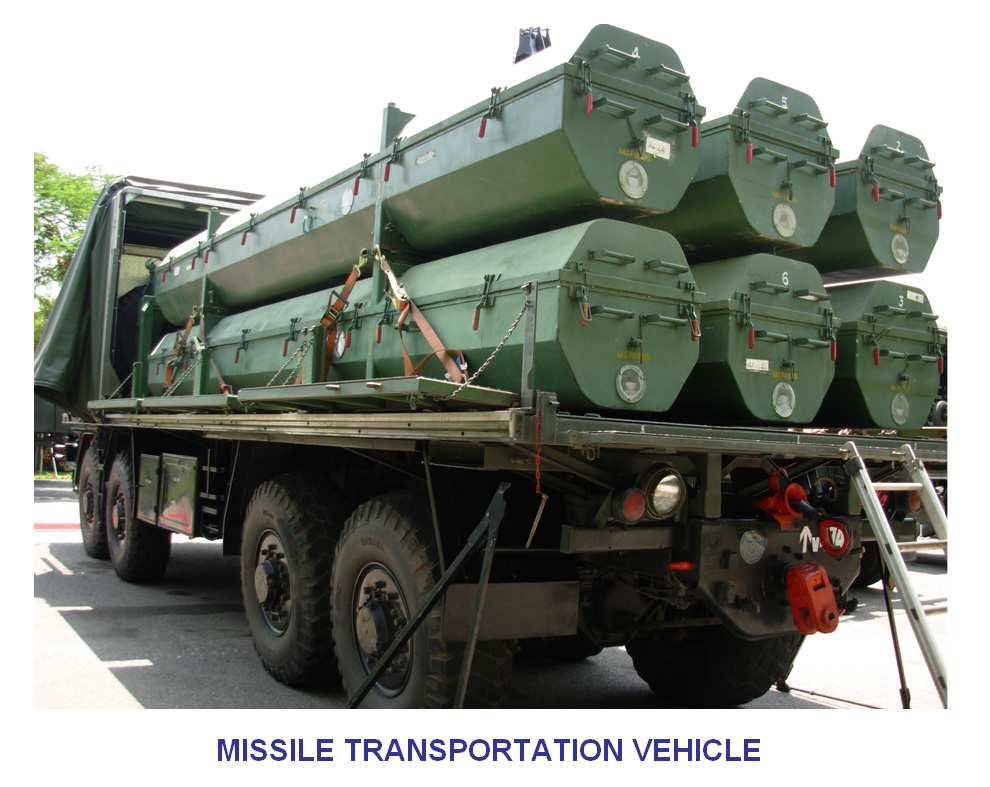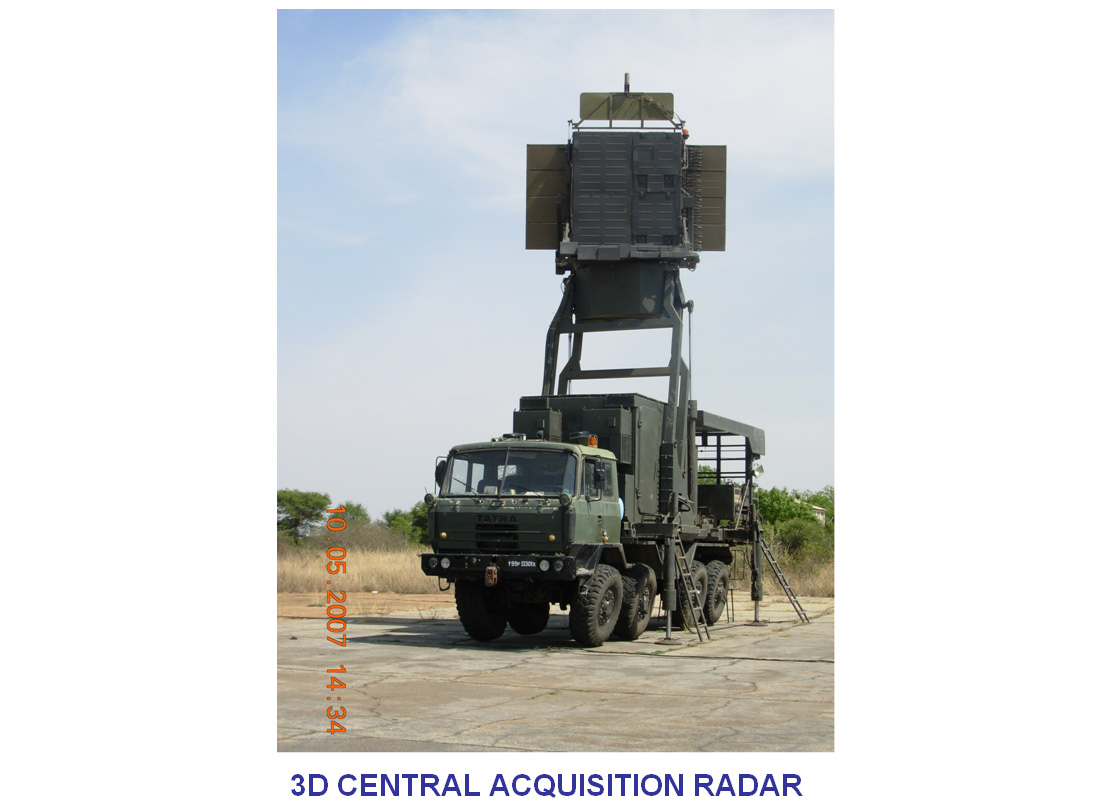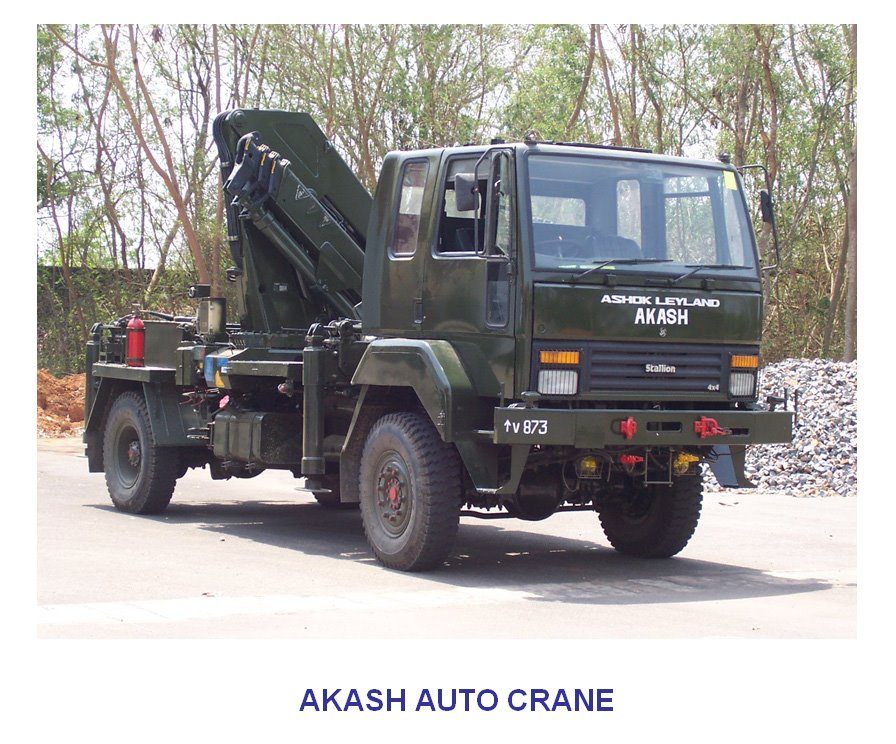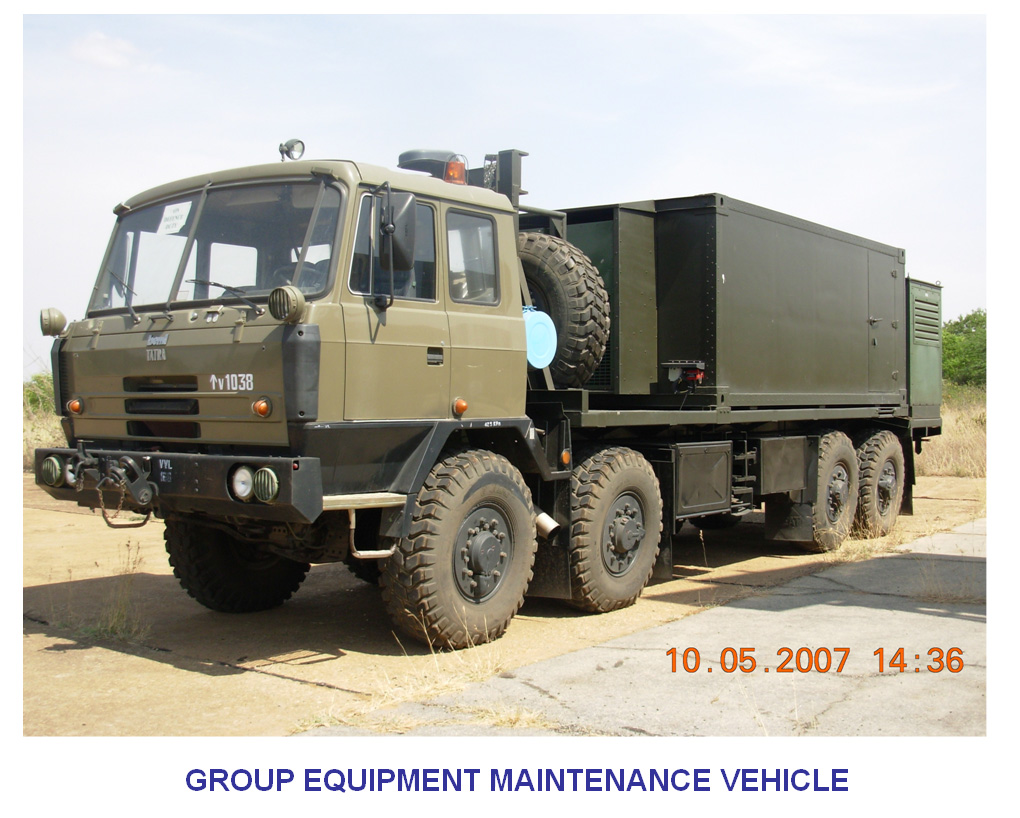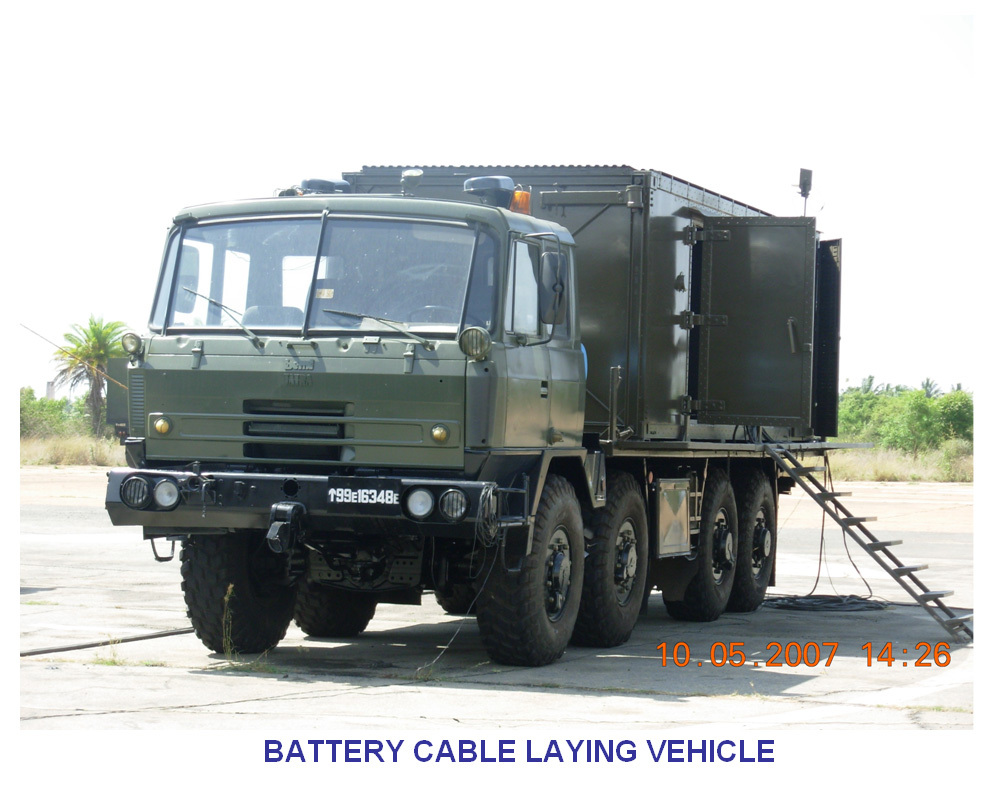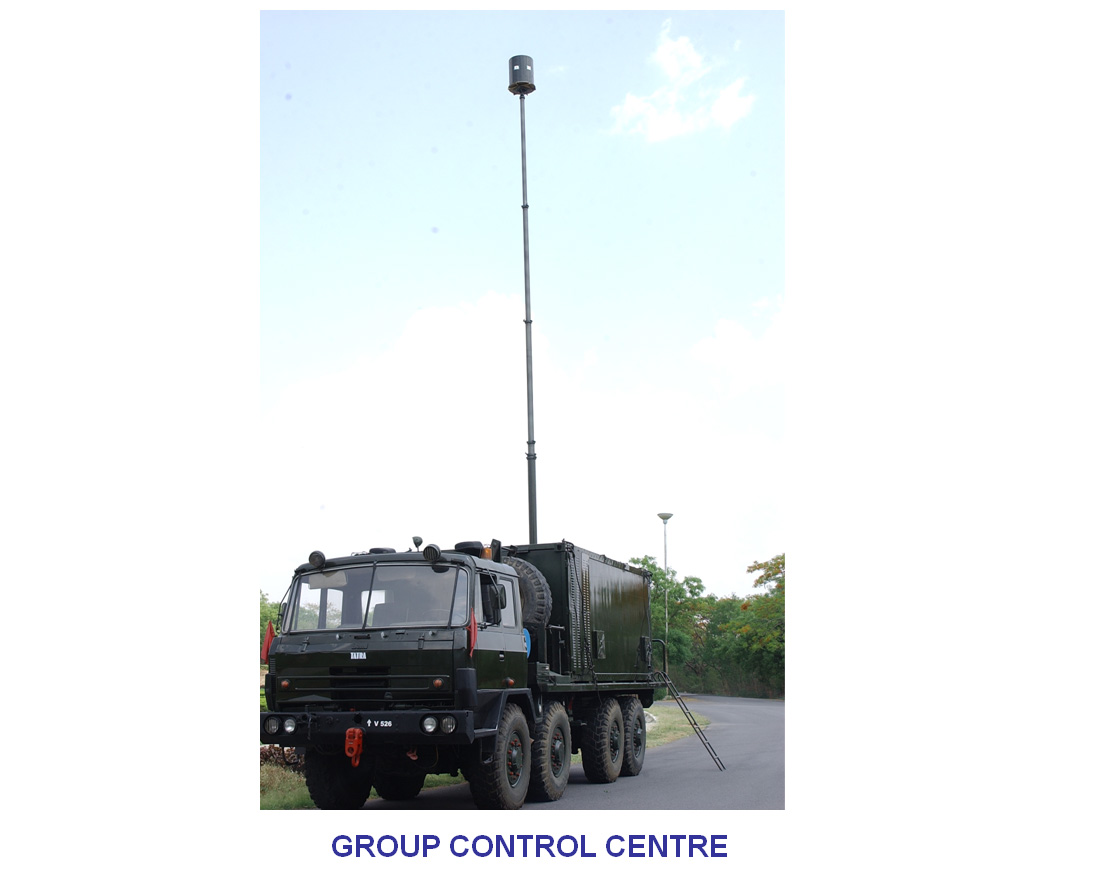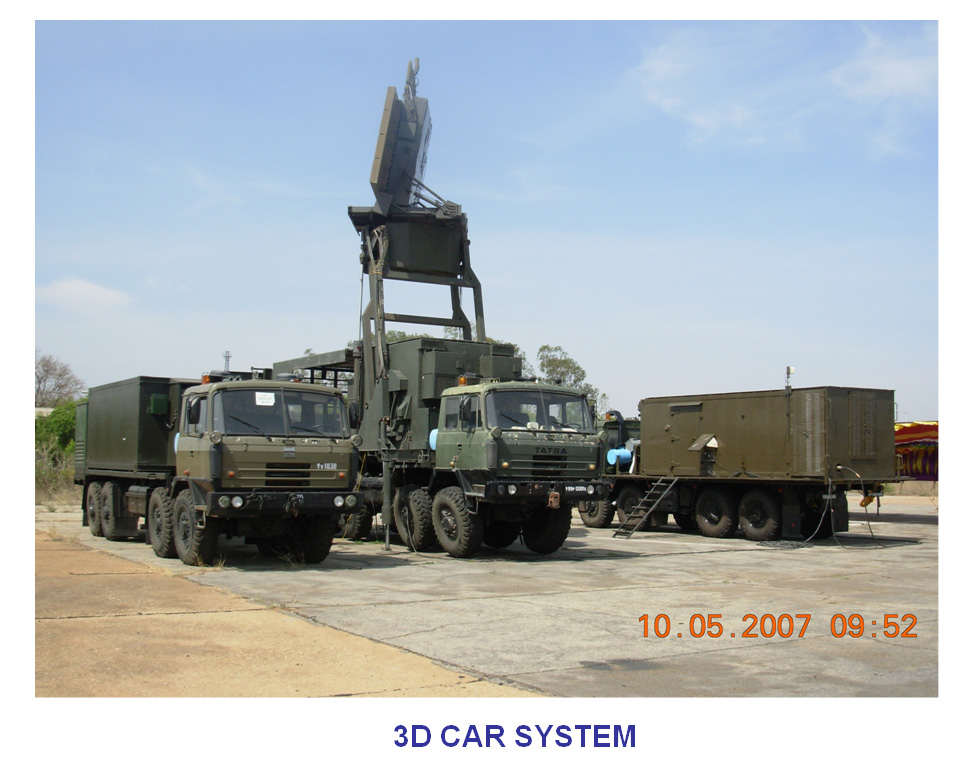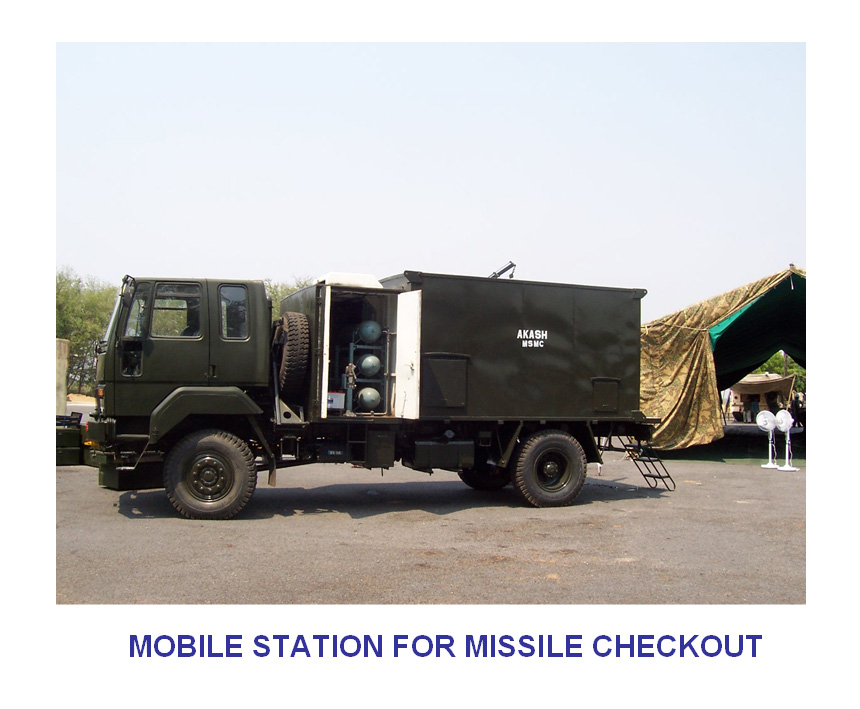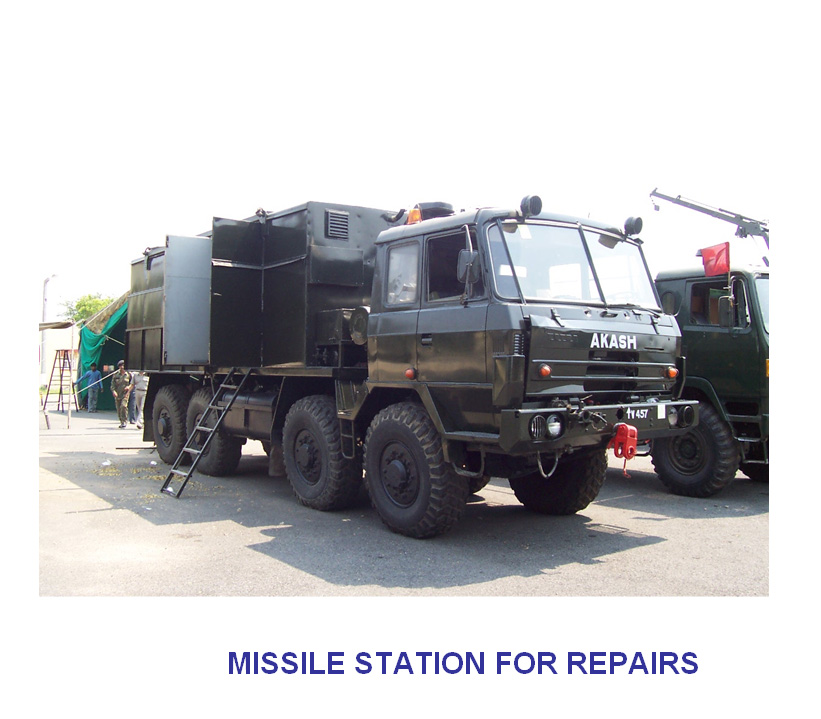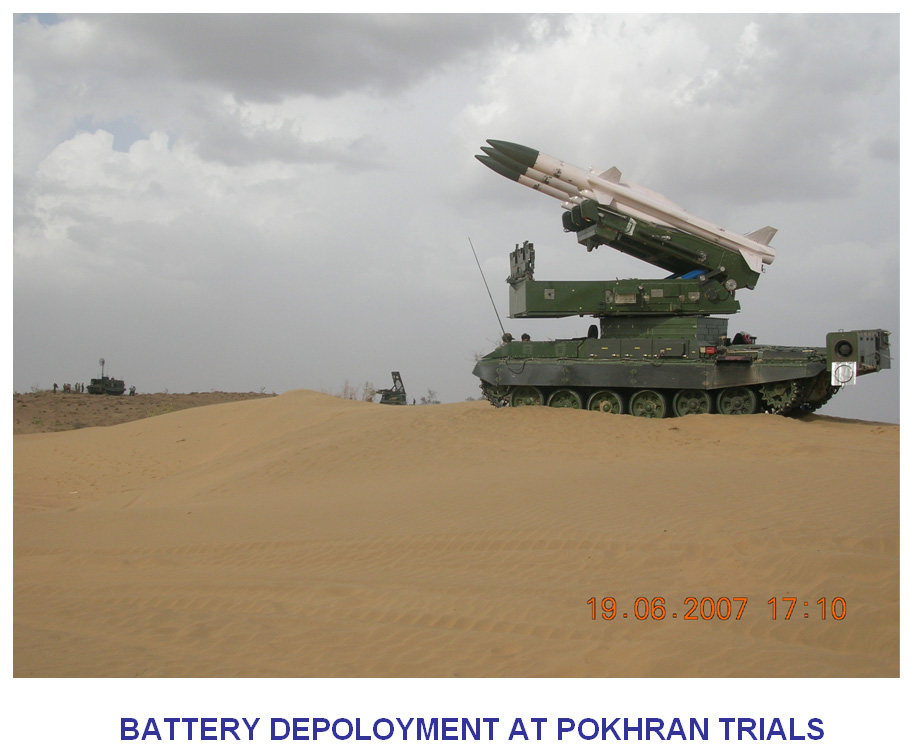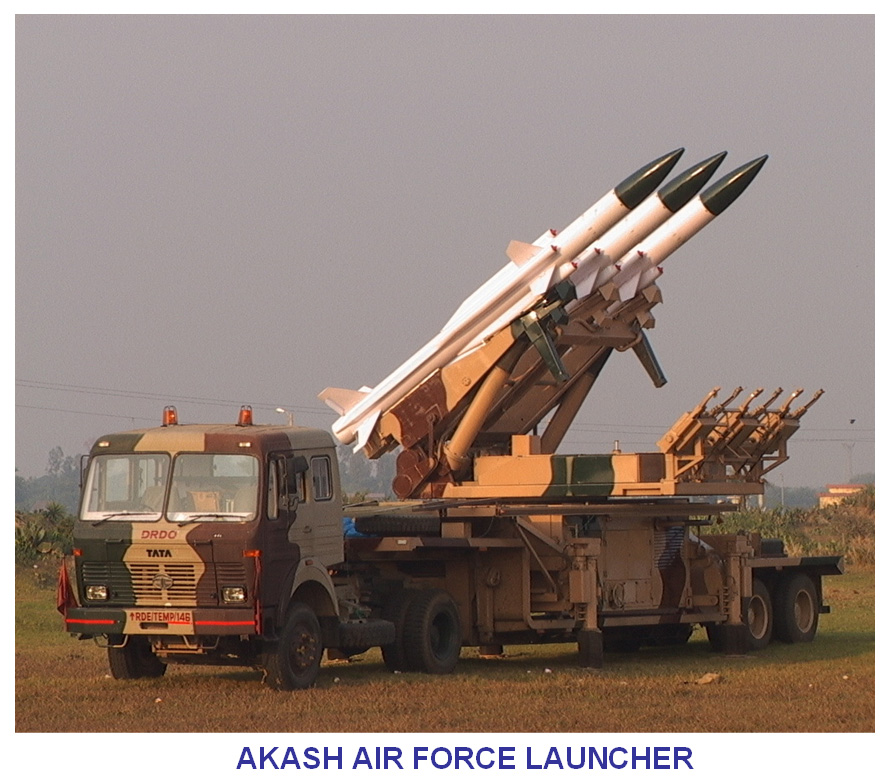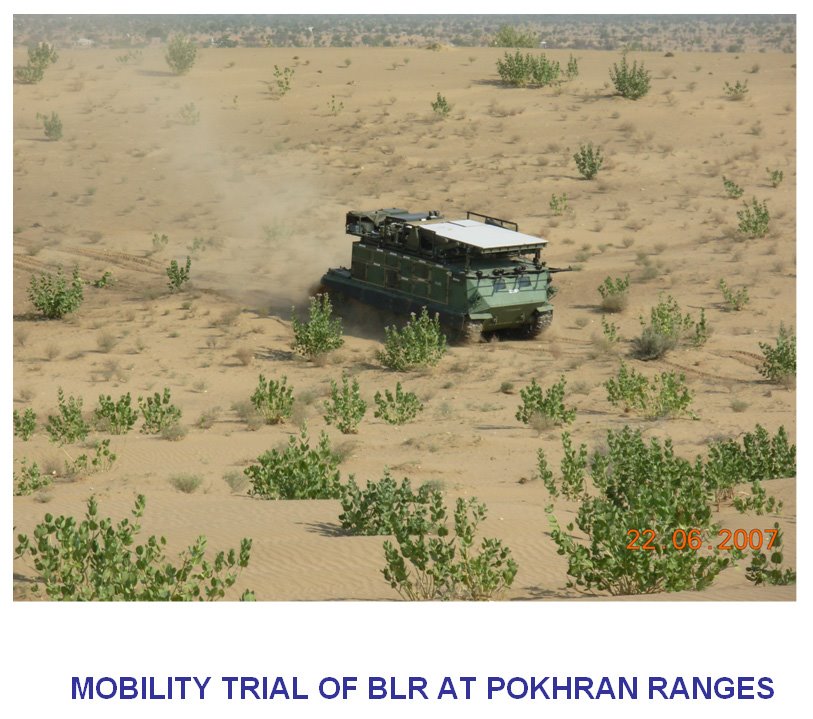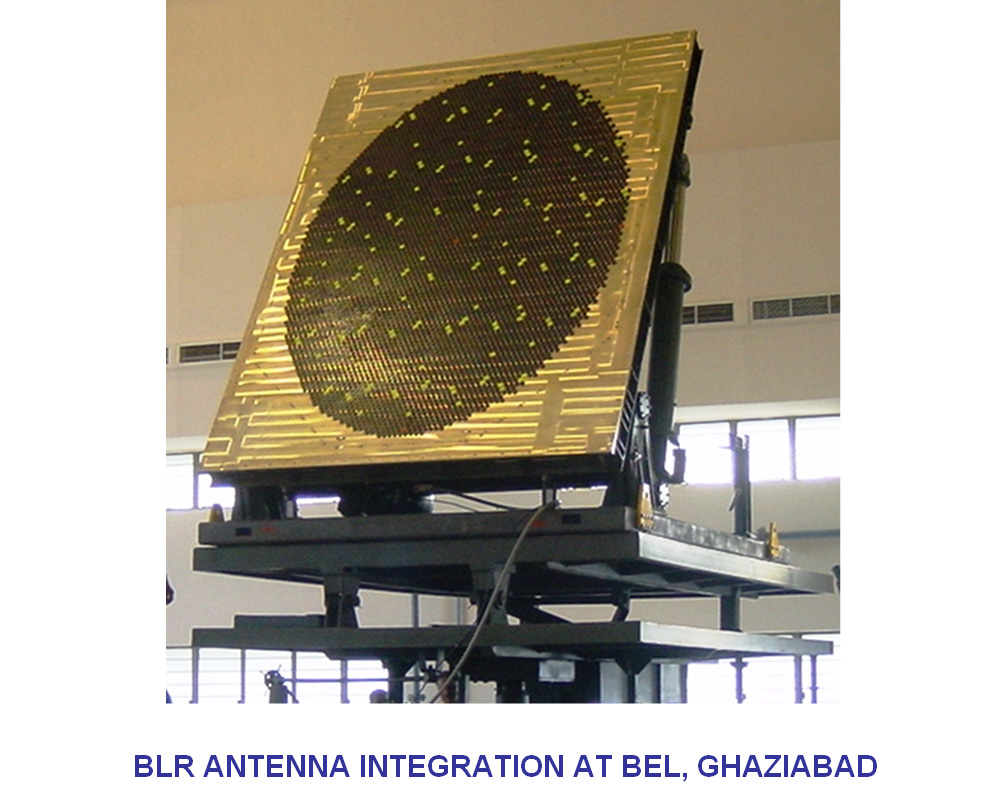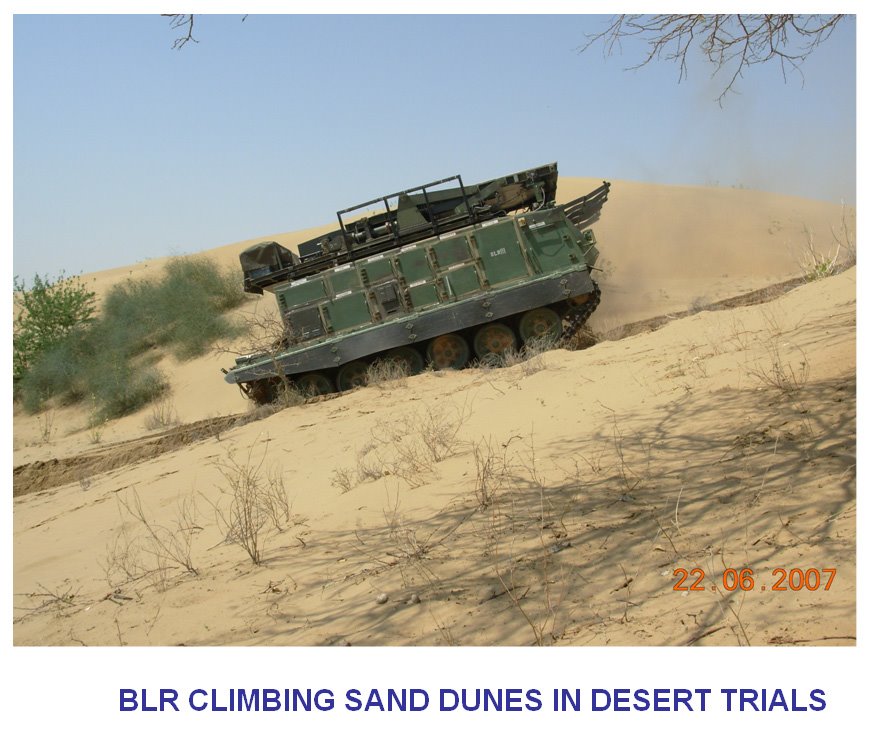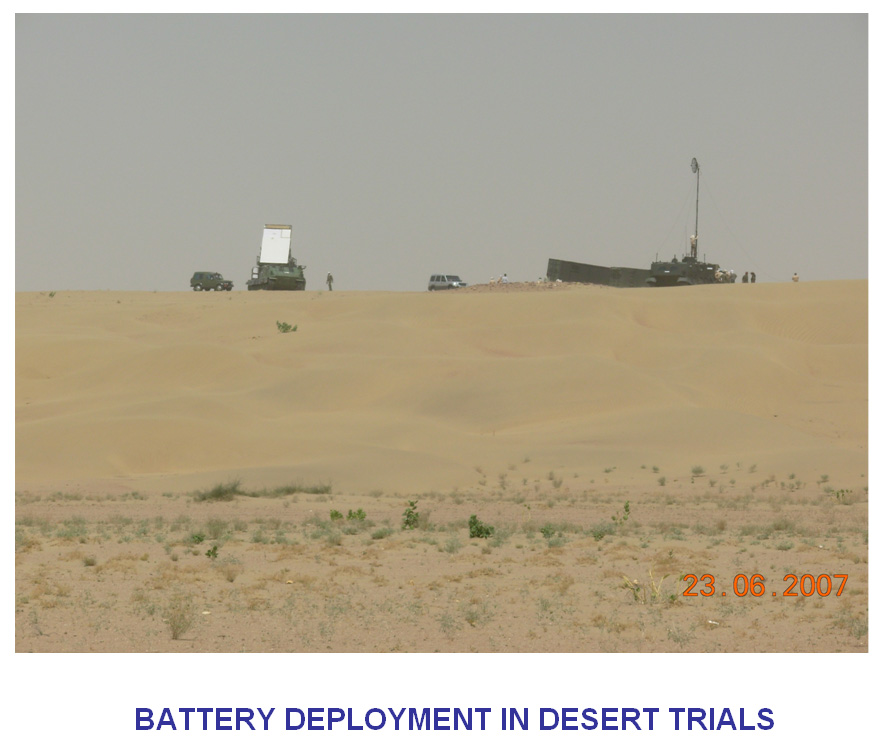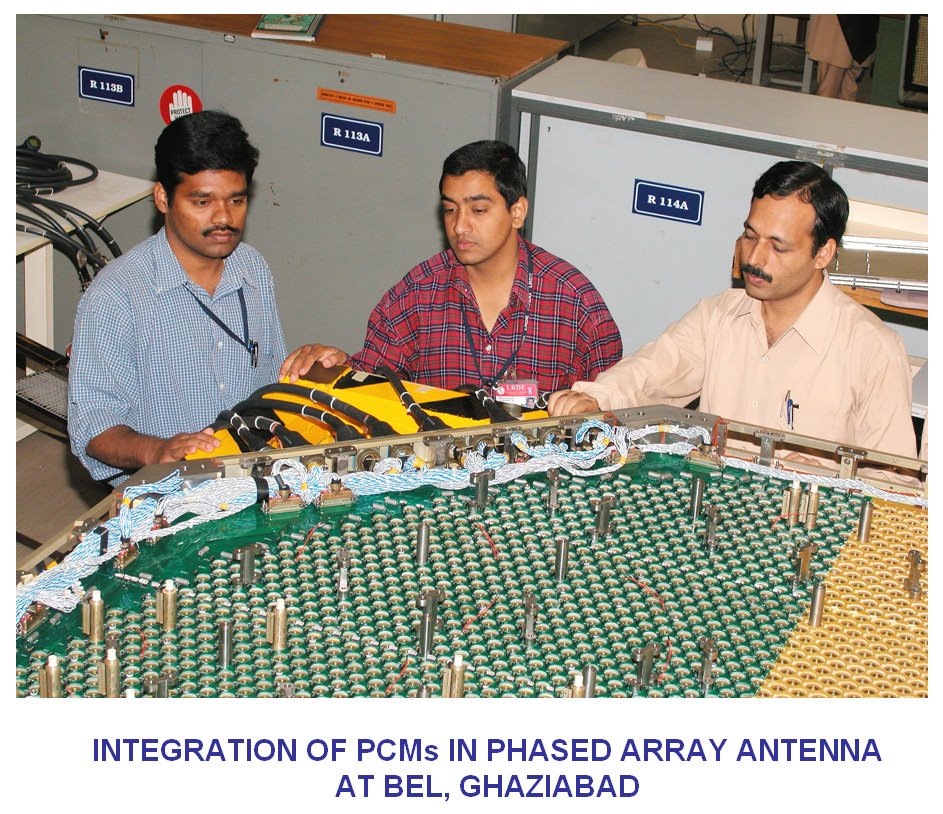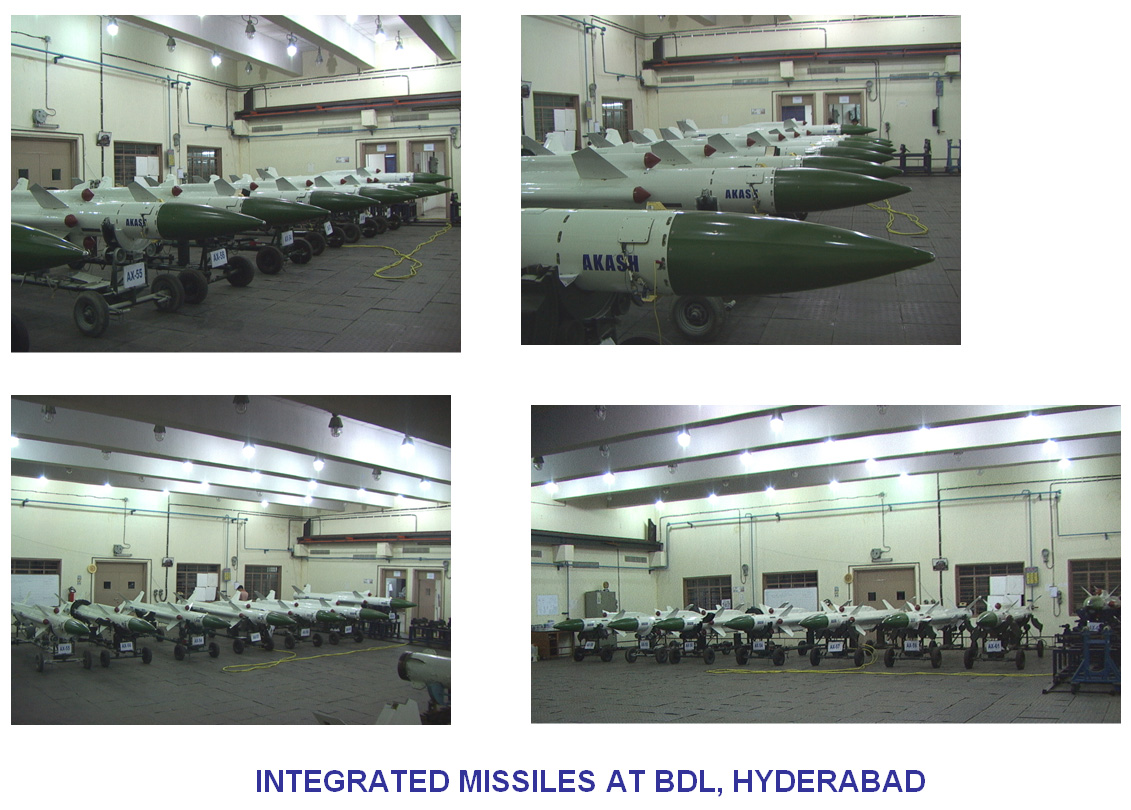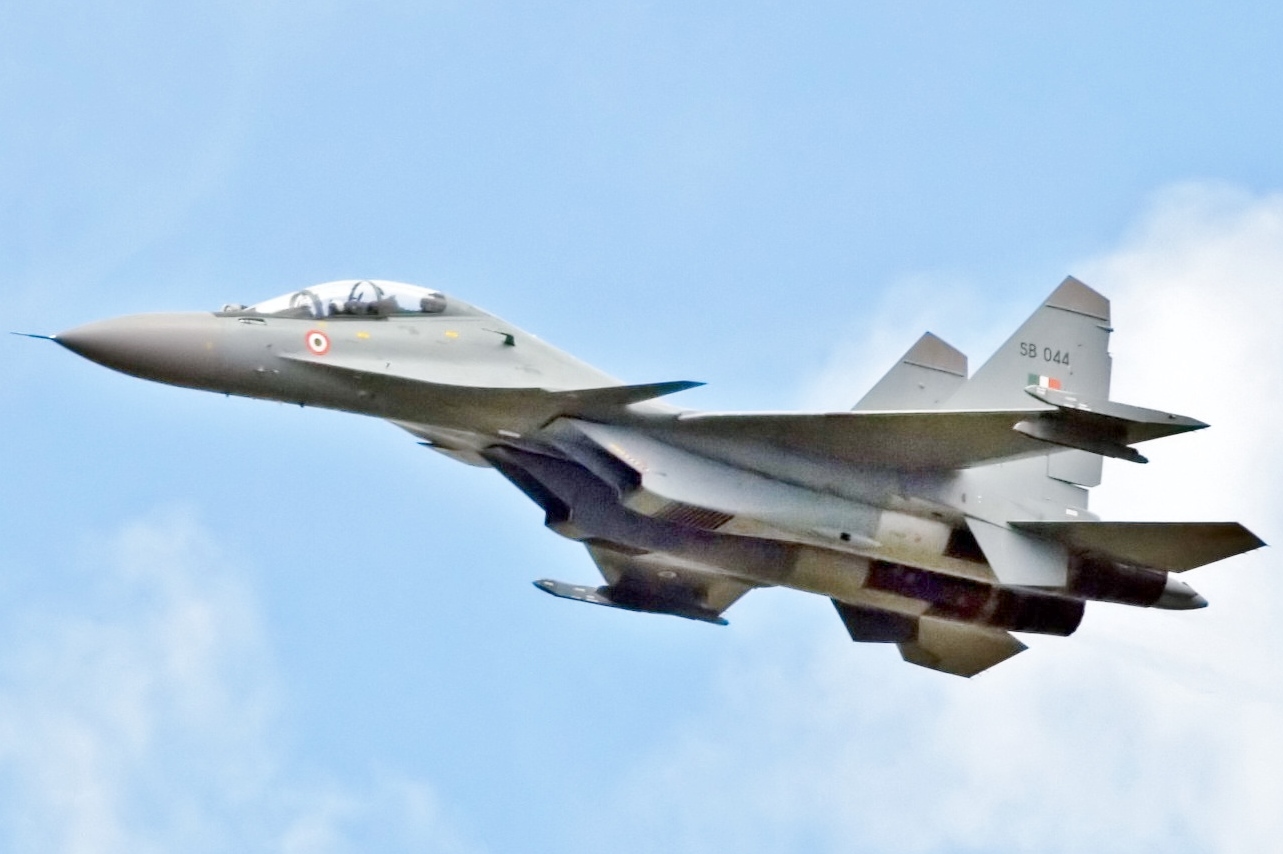The S-300 is a series of Russian long range surface-to-air missile systems produced by NPO Almaz, all based on the initial S-300P version. The S-300 system was developed to defend against aircraft and cruise missiles for the Soviet Air Defence Forces. Subsequent variations were developed to intercept ballistic missiles.
The S-300 system was first deployed by the Soviet Union in 1979, designed for the air defense of large industrial and administrative facilities, military bases, and control of airspace against enemy strike aircraft.
The project-managing developer of the S-300 is Russian Almaz corporation (government owned, aka "KB-1") which is currently a part of "Almaz-Antei" Air Defense Concern. S-300 uses missiles developed by MKB "Fakel" design bureau (a separate government corporation, aka "OKB-2").
The S-300 is regarded as one of the most potent anti-aircraft missile systems currently fielded[2]. Its radars have the ability to simultaneously track up to 100 targets while engaging up to 12. S-300 deployment time is five minutes.[3][dead link] The S-300 missiles are sealed rounds and require no maintenance over their lifetime. An evolved version of the S-300 system is the S-400 (NATO reporting name SA-21), entering service in 2004.
Contents [hide]
1 Variations and upgrades
1.1 S-300 system family tree
1.2 S-300P
1.2.1 Land-based S-300P (SA-10)
1.2.2 Sea-based S-300F (SA-N-6)
1.3 S-300V (SA-12)
1.4 S-300PMU-1/2 (SA-20)
1.5 S-400 (SA-21)
1.6 S-300VM (SA-X-23)
2 Operators and other versions
3 Former operators
4 Possible future operators
5 Combat history
6 Specifications
6.1 Radar
6.2 Missiles
7 References
8 External links
[edit] Variations and upgrades
Numerous versions have since emerged with different missiles, improved radars, better resistance to countermeasures, longer range and better capability against short-range ballistic missiles or targets flying at very low altitude. There are currently three main variations.
[edit] S-300 system family tree
S-300 Family
S-300V S-300P S-300F
S-300V1 S-300V2 S-300PT S-300PS Fort Rif
S-300VM S-300PT-1 S-300PM S-300PMU Fort-M Rif-M
Favorit-S
S-300VM1 S-300VM2 S-300PT-1A S-300PM1 S-300PMU1
Antey 2500 S-300PM2 S-300PMU2 Russian Version
Favorit Export Version
S-300VMD S-400
[edit] S-300P
[edit] Land-based S-300P (SA-10)
Two S-300-PM missile TEL and a 'Flap Lid' radarThe S-300P (transliterated from Russian С-300П, NATO reporting name SA-10 GRUMBLE) is the original version of the S-300 system which became operational in 1978.[1] In 1987 over 80 of these sites were active, mainly in the area around Moscow. The P suffix stand for PVO-Strany (country air defence system). An S-300PT unit consists of a 36D6 (NATO reporting name TIN SHIELD) surveillance radar, a 30N6 (FLAP LID) fire control system and 5P85-1 launch vehicles. The 5P85-1 vehicle is a semi-trailer truck. Usually a 76N6 (CLAM SHELL) low altitude detection radar is also a part of the unit.[4]
This system broke substantial new ground, including the use of a phased array radar and multiple engagements on the same Fire-control system (FCS). Nevertheless, it had some limitations. It took over one hour to set up this semi-mobile system for firing and the hot vertical launch method employed scorched the TEL.[5]
It was originally intended to fit the Track Via Missile (TVM) guidance system onto this model. However, the TVM system had problems tracking targets below 500 m. Rather than accept the limitation, the Soviets decided that the tracking of low altitude targets was a must and decided to use a pure command-guidance system until the TVM head was ready.[5] This allowed the minimum engagement altitude to be set at 25 m.
Improvements to the S-300P have resulted in several major subversions for both the internal and the export market. The S-300PT-1 and S-300PT-1A (SA-10b/c) are incremental upgrades of the original S300PT system. They introduce the 5V55KD missile and the cold launch method thereafter employed. Time to readiness was reduced to 30 minutes (broadly comparable to Patriot) and trajectory optimizations allowed the 5V55KD to reach a range of 75 km.[5]
The S-300PS/S-300PM (Russian C-300ПC/C-300ПМ, NATO reporting name SA-10d/e) was introduced in 1985 and is the only version thought to have been fitted with a nuclear warhead. This model saw the introduction of the modern TEL and mobile radar and command-post vehicles that were all based on the MAZ-7910 8x8 truck.[1] This model also featured the new 5V55R missiles which increased maximum engagement range to 90 km (56 mi) and introduced a terminal semi-active radar homing (SARH) guidance mode. The surveillance radar of these systems was designated 30N6. Also introduced with this version was the distinction between self propelled and towed TELs. The towed TEL is designated 5P85T. Mobile TELs were the 5P85S and 5P85D. The 5P85D was a "slave" TEL, being controlled by a 5P85S "master" TEL. The "master" TEL is identifiable thanks to the large equipment container behind the cabin; in the "slave" TEL this area is not enclosed and is used for cable or spare tyre storage.
A side-on close-up, ready to launch. Photo from Field Artillery Magazine.The next modernisation, called the S-300PMU (Russian C-300ПМУ, US DoD designation SA-10f) was introduced in 1992 for the export market and featured the upgraded 5V55U missile which still utilised the intermediate SARH terminal guidance method and smaller warhead of the 5V55R but increased the engagement envelope to give this missile roughly the same range and altitude capabilities as the newer 48N6 missile (max. range 150 km/93 mi). The radars were also upgraded, with the surveillance radar for the S-300PMU being designated 64N6 (BIG BIRD) and the illumination and guidance radar being designated 30N6-1 in the GRAU index.[6]
[edit] Sea-based S-300F (SA-N-6)
Close up view of SA-N-6 launchers on Marshal Ustinov.The S-300F Fort (Russian C-300Ф Форт, DoD designation SA-N-6, F suffix for Flot, Russian for fleet) was introduced in 1984 as the original ship-based (naval) version of the S-300P system developed by Altair with the new 5V55RM missile with range extended to 7–90 km (4-56 mi, equal to 3.8-50 nautical miles) and maximum target speed up to Mach 4 while engagement altitude was reduced to 25-25,000 m (100-82,000 ft). The naval version utilises the TOP SAIL or TOP STEER, TOP PAIR and 3R41 Volna (TOP DOME) radar and utilises command guidance with a terminal semi-active radar homing (SARH) mode. Its first installation and sea trials were on a Kara class cruiser and it is also installed on Slava class cruisers and Kirov class battlecruisers. It is stored in eight (Slava) or twelve (Kirov) 8-missile rotary launchers below decks. The export version of this system is known as Rif (Russian Риф — reef).
The S-300FM Fort-M (Russian C-300ФМ, DoD designation SA-N-20) is another naval version of the system, installed only on the Kirov class cruiser RFS Pyotr Velikiy, and introduced the new 48N6 missile. It was introduced in 1990 and increased missile speed to approximately Mach 6 for a maximum target engagement speed of up to Mach 8.5, increased the warhead size to 150 kg (330 lb) and increased the maximum engagement range yet again to 5–150 km (3-93 mi) as well as opening the altitude envelope to 10m-27 km (33–88500 ft). The new missiles also introduced the ultimate track-via-missile guidance method and brought with it the ability to intercept short-range ballistic missiles. This system makes use of the TOMB STONE MOD rather than TOP DOME radar. The export version is called the Rif-M. Two Rif-M systems were purchased by China in 2002 and installed on the Type 051C air-defence guided missile destroyers.
Both naval versions are believed to include a secondary infrared terminal seeker, similar to the newer US Standard missile system, probably to reduce the system's vulnerability to saturation. This also allows the missile to engage contacts over the radar horizon, such as warships or sea-skimming anti-ship missiles.
[edit] S-300V (SA-12)
S-300V (SA-12a Gladiator)The 9K81 S-300V Antey-300 (Russian 9К81 С-300Ð’ Ðнтей-300 - named after Antaeus, NATO reporting name SA-12 Gladiator/Giant) is a bit different from the other versions. It was built by Antey as opposed to Almaz.[7] The V suffix stands for Voyska (ground forces). It was designed to act as the top tier army air defence system, providing a defence against ballistic missiles, cruise missiles and aircraft, replacing the SA-4 'Ganef'. The "GLADIATOR" missiles have a maximum engagement range of around 75 km (47 miles) while the "GIANT" missiles can engage targets out to 100 km (62 miles) and up to altitudes of around 32 km (100,000 ft). In both cases the warhead is around 150 kg (331 lb).
While it was created from the same project (hence the common S-300 designation) different priorities resulted in a design quite different from the other versions. The S-300V system is carried on tracked MT-T transporters, which gives it better cross-country mobility than even the S-300Ps on 8x8 wheeled transporters. It is also somewhat more distributed than the S-300P's. For example, while both have mechanically-scanned radar for target acquisition (9S15 BILL BOARD A), the battery level 9S32 GRILL PAN has autonomous search ability and SARH delegated to illumination radar on TELARs. The early 30N6 FLAP LID on the S-300P handles tracking and illumination, but is not equipped with autonomous search (later upgraded).
SA-12 high altitude surface-to-air missile systemsThe S-300V places a greater emphasis on ABM, with the dedicated 9M83 (SA-12B Giant). This missile is larger and only two can be held on each TELAR. It also has a dedicated ABM radar - the 9S19 HIGH SCREEN phased array radar at battalion level. A typical S-300V battalion is made up out of a target detection and designation unit, a guidance radar and up to 6 TELARs. The detection and designation unit consists of the 9S457-1 command post, a 9S15MV or 9S15MT BILL BOARD all-round surveillance radar and 9S19M2 HIGH SCREEN sector surveillance radar.[8] The S-300V uses the 9S32-1 GRILL PAN multi-channel guidance radar. Four types of TELARs can be used with the system. The 9A83-1 which holds 4 9M83 GLADIATOR missiles and the 9A82 which holds 2 9M82 GIANT missiles are pure launchers, while the 9A84 (4× 9M83 GLADIATOR missile) and 9A85 (2× 9M82 GIANT missile) are loaders/launchers.
S-300V system may be controlled by a upper level command post system 9S52 Polyana-D4 integrating it with Buk missile system into a brigade.
[edit] S-300PMU-1/2 (SA-20)
S-300PMU-2 64N6E2 acquisition radar (part of 83M6E2 command post)The S-300PMU-1 (Russian C-300ПМУ-1,US DoD designation SA-20A, NATO reporting name SA-20 GARGOYLE) was also introduced in 1992 with the new and larger 48N6 missiles for the first time in a land-based system and introduced all the same performance improvements from the S300FM version including the increased speed, range, TVM guidance and ABM capability.[9] The warhead is slightly smaller than the naval version at 143 kg (315 lb). This version also saw the introduction of the new and more capable 30N6E TOMB STONE radar.
The S-300PMU-1 was introduced in 1999 and for the first time introduces several different kinds of missiles in a single system. In addition to the 5V55R, 48N6E and 48N6E2 missiles the S-300PMU-1 can utilise two new missiles, the 9M96E1 and 9M96E2. Both are significantly smaller than the previous missiles at 330 and 420 kg (728 and 926 lb respectively) and carry smaller 24 kg (53 lb) warhead. The 9M96E1 has an engagement range of 1–40 km (1-25 mi) and the 9M96E2 of 1–120 km (1-75 mi). They are still carried 4 per TEL. Rather than just relying on aerodynamic fins for manoeuvring, they use a gas-dynamic system which allows them to have an excellent probability of kill (Pk) despite the much smaller warhead. The Pk is estimated at 0.7 against a tactical ballistic missile for either missile. The S-300PMU-1 typically uses the 83M6E command and control system, although it is also compatible with the older Baikal-1E and Senezh-M1E CCS command and control systems. The 83M6E system incorporates the 64N6E (BIG BIRD) surveillance/detection radar. The fire control/illumination and guidance radar used is the 30N6E(1), optionally matched with a 76N6 low altitude detection radar and a 96L6E all altitude detection radar. The 83M6E command and control system can control up to 12 TELs, both the self propelled 5P85SE vehicle and the 5P85TE towed launchers. Generally support vehicles are also included, such as the 40V6M tow vehicle, intended for lifting of the antenna post.[10]
S-300PMU-2 vehicles. From left to right: 64N6E2 detection radar, 54K6E2 command post and 5P85 TEL.The S-300PMU-2 Favorite (Russian C-300ПМУ-2 Фаворит – Favourite, DoD designation SA-20B), introduced in 1997, is an upgrade to the S-300PMU-1 with range extended once again to 195 km (121 mi) with the introduction of the 48N6E2 missile. This system is apparently capable against not just short range ballistic missiles, but now also medium range tactical ballistic missiles. It uses the 83M6E2 command and control system, consisting of the 54K6E2 command post vehicle and the 64N6E2 surveillance/detection radar. It employs the 30N6E2 fire control/illumination and guidance radar. Like the S-300PMU-1, 12 TELs can be controlled, with any mix of 5P85SE2 self propelled and 5P85TE2 trailer launchers. Optionally it can make use of the 96L6E all altitude detection radar and 76N6 low altitude detection radar, just like the S-300PMU-1.[3]
[edit] S-400 (SA-21)
Main article: S-400
The S-400 Triumf (Russian С-400 «Триумф», formerly known as the S-300PMU-3/C-300ПМУ-3, NATO reporting name SA-21 GROWLER) was introduced in 1999 and features a new, much larger missile with 2 per TEL. The project has been encountering delays since its original announcement and deployment has only begun on a small scale in 2006. With an engagement range of up to 400 km (250 mi), depending on the missile variant used, and claimed to be able to detect stealth targets it is by far the most advanced version.[11][dead link] Little else is known about this version.
[edit] S-300VM (SA-X-23)
Main article: S-300VM
The S-300VM (Antey 2500) is an upgrade to the S-300V. It consists of a new command post vehicle, the 9S457ME and a selection of new radars. As all-round surveillance radar the 9S15M2, 9S15MT2E or 9S15MV2E are possible, and the sector surveillance radar was upgraded to 9S19ME. The upgraded guidance radar has Grau index 9S32ME. The system can still employ up to 6 TELARs, the 9A84ME launchers (up to 4 × 9M83ME missile) and up to 6 launcher/loader vehicles assigned to each launcher (2 × 9M83ME missile each).
[edit] Operators and other versions
Producers and users of the S-300 and its main competitor MIM-104 PatriotThe S-300 is mainly used in Eastern Europe and Asia although sources are inconsistent about the exact countries possessing the system.[12]
Armenia Deployed in Armenia by Russia in 102nd Military Base[13][14]
Belarus - S-300PS systems delivered from Russia in 2007 to replace older S-300 model in Belarussian inventory,Older S-300V sold to Turkey for testing and using on Anatolian Eagle exercises.
Bulgaria has ten S-300 launchers, divided into two units with five launchers each.[15]
People's Republic of China: China has bought the S-300PMU-1 and are licensed to manufacture it under the name Hongqi-10 (HQ-10). China is also the first customer of S-300PMU-2 and may be using the S-300V under the name Hongqi HQ-18.[16] China also built an upgraded version of the HQ-10 labelled the HQ-15 with the maximum range upgraded from 150 km (93 mi) to 200 km (124 mi). There are unconfirmed reports that claim this version is the Chinese manufactured S-300PMU-2.[17][18] The total number of the S-300PMU/1/2 and HQ-15/18 batteries in PLA are approximately 40 and 60 respectively, in the year 2008. The total number of the missiles is well above 1,600, with about 300 launcher platforms.[18] Five such SAM battalions are deployed and in active duty around Beijing region, six battalions in Taiwan strait region and rest battalions in other major cities like Shanghai, Chengdu and Dalian. Two Rif (SA-N-6) systems were purchased in 2002 for the Chinese Navy for the Type 051C Destroyers.
Cyprus & Greece: Cyprus signed an agreement to buy S-300 systems in 1996. Eventually bought the S-300PMU-1 version, but due to political tension between Cyprus and Turkey and intense Turkish pressure, the system was transferred to the Greek Island of Crete. Later, Cyprus acquired the Tor-M1 system and the Buk-M1 system. Finally, on 19/12/07 the missiles passed officially to Greek government in return for more Tor-M1 systems and Buk-M1 systems.[15]
India has bought six S-300 batteries in August 1995 for $1 billion, probably the S-300PMU-2 version, believed to consist of 48 missiles per system. These will most likely be used in the short-range ballistic-missile defence (BMD) role against Pakistan's M-11 missiles.[19]
Iran 's status regarding the S-300 system remains controversial. They seem to have acquired an unknown number of S-300PMU-1 missiles in 1993, maybe even 300 recently from Belarus.[20] Iran claimed to have signed a contract with Russia on 25 December 2007 on the sales of the S-300PMU-2 missile system.[21] Russian officials have denied this.[22] According to senior Israeli defence sources Iran is to receive S-300s by 2009, deliveries will take place from September until begin 2009.[23][24][25] It has also been claimed that Croatia sold their S-300s to Iran.[26] Later, another claim was made saying Libya transferred S-300s to Iran.[27]. On December 21, according to a senior Iranian lawmaker, Russia has started the supply of components for S-300 air defense systems to Iran. Esmaeil Kosari, deputy chairman of the parliamentary commission on national security and foreign policy, told the Iranian news agency IRNA that Iran and Russia had held negotiations for several years on the purchase of S-300 air defense systems and had finalized a deal. Kosari said the Islamic Republic would deploy S-300 surface-to-air missile systems to strengthen national defense on border areas.[28] On 28 October 2009, When asked when Russia would deliver the systems to Iran, Ivanov said: "There have been no such deliveries to date."[29] Yet on 23 December 2009, Russian Deputy Foreign Minister Alexei Borodavkin said Russia sees no reason to cancel a deal to provide S-300s to Iran. He said ""Exports of such weapons is subject to no UN treaty or other bilateral agreements, This is why we see no essential reason to make any change in the deal," indicating that there is a deal.[30]
Kazakhstan
Serbia Serbia bought 6-10 s-300PMU prior to 1999 NATO bombing campaign. At the time 20 misilles were delivered but without Clam Shell radar unit.[31]
Slovakia - Inherited from Czechoslovakia. Slovakian proposal to equip another battalion in mid '90 was canceled.
Syria announced an intention to buy the S-300P in 1991 and now seems to possess the system.[12][20]
Russia: Has used all of the S-300 variations. The Russian Air Defense Forces, which are part of the Air Force, currently deploy more than 30 regiments equipped with S-300 missile complexes, which are gradually being replaced with S-400 systems.[32] More than 20 Russian battalions will be equipped with S-400 anti-missile systems by 2015 said General of the Army Yury Baluyevsky, Chief of the General Staff of the Armed Forces of the Russian Federation.[33]
Ukraine - S-300PS, S-300PMU, S-300V and others.[34]
United States has bought an S-300V system for evaluation, to aid upgrading US Patriot missile systems.
Venezuela Venezuela has ordered S-300VM "Antey-2500" to equip 12 Regiments. Deleveries are expected to be completed by 2010-2011.[35]
Vietnam has bought two S-300PMU-1 batteries (12 launchers) for nearly $300 million.[36]
[edit] Former operators
Croatia: Croatia no longer maintains an S-300 system. It was acquired from Ukraine or Belarus in 1995 and was never in operational state, but served the role of a psychological weapon. After much controversy, as of 2004 the system is no longer in Croatia and was presumably sold.
Czechoslovakia - One battalion created in 1985. Passed on to Slovakia in 1992.
East Germany
Soviet Union
[edit] Possible future operators
Venezuela Venezuelan government has recently confirmed a contract with the Russian government to buy one S-300 missile system.[37]
Libya - 4 S-300PMU-2 systems will be ordered
Indonesia - Indonesian air force has shown interest of acquiring several S-300PMU-2 systems
Algeria - 8 S-300PMU2 was ordered in 2006.
Saudi Arabia - Saudi Arabia is in talks to purchase the newest system S-400.[38]
[edit] Combat history
Although none of the S-300 versions have ever fired a missile in a real conflict, it is considered a very capable SAM system. In April 2005, NATO had a combat exercise in France and Germany called Trial Hammer 05 to practice SEAD missions.[6] Participating countries were pleased that the Slovak Air Force brought a S-300PMU along, providing a unique opportunity for NATO to get familiar with the system.
Israel has sought F-35 Lightning II fighters to nullify the threat of S-300 missiles being provided to Iran.[39][40]
[edit] Specifications
Missiles are guided by the 30N6 FLAP LID or naval 3R41 Volna (TOP DOME) radar using command guidance with terminal semi-active radar homing. Later versions use the 30N6 FLAP LID B or TOMB STONE radar to guide the missiles via command guidance/seeker-aided ground guidance (SAGG). SAGG is similar to the Patriot's TVM guidance scheme. The earlier 30N6 FLAP LID A can guide up to four missiles at a time to up to four targets, and can track up to 24 targets at once. The 30N6E FLAP LID B can guide up to two missiles per target to up to six targets simultaneously. Targets flying at up to Mach 2.5 can be successfully engaged or around Mach 8.5 for later models. One missile can be launched every three seconds. The mobile control centre is able to manage up to 12 TELs simultaneously.
The original warhead weighed 100 kg (220 lb), intermediate warheads weighed 133 kg (293 lb) and the latest warhead weighs 143 kg (315 lb). All are equipped with a proximity fuze and contact fuze. The missiles themselves weigh between 1,450 kg (3,200 lb) and 1,800 kg (3,970 lb). Missiles are catapulted clear of the launching tubes before their rocket motor fires, which can accelerate at up to 100 g (1 km/s²). They launch straight upwards and then tip over towards their target, removing the need to aim the missiles before launch. The missiles are steered with a combination of control fins and through thrust vectoring vanes. The sections below give exact specifications of the radar and missiles in the different S-300 versions. It should be noted that since the S-300PM most vehicles are interchangeable across variations.
[edit] Radar
The 30N6 FLAP LID A is mounted on a small trailer. The 64N6 BIG BIRD is mounted on a large trailer along with a generator and typically towed with the now familiar 8-wheeled truck. The 76N6 CLAM SHELL is mounted on a large trailer with a mast which is between 24 and 39 m (79 and 128 ft) tall.
The original S-300P utilises a combination of the 76N6 CLAM SHELL continuous-wave doppler radar for target acquisition and the 30N6 FLAP LID A I/J-band phased array digitally steered tracking and engagement radar. Both are mounted on trailers. In addition there is a trailer-mounted command centre and up to twelve trailer-mounted erector/launchers with four missiles each. The S-300PS/PM is similar but uses an upgraded 30N6 tracking and engagement radar with the command post integrated and has truck-mounted TELs.
If employed in an anti-ballistic missile or anti-cruise missile role, the 64N6 BIG BIRD E/F-band radar would also be included with the battery. It is capable of detecting ballistic missile class targets up to 1000 km (620 mi) away travelling at up to 10000 km/h (6200 mph) and cruise missile class targets up to 300 km (185 mi) away. It also employs electronic beam steering and performs a scan once every twelve seconds.
The 36D6 TIN SHIELD radar can also be used to augment the S-300 system to provide earlier target detection than the FLAP LID radar allows. It can detect a missile-sized target flying at an altitude of 60 meters (200 ft) at least 20 km (12.5 mi) away, at an altitude of 100 meters (330 ft) at least 30 km (19 mi) away, and at high altitude up to 175 km (108 mi) away. In addition a 64N6 BIG BIRD E/F band target acquisition radar can be used which has a maximum detection range of 300 km (186 mi).
The S-300 FC Radar Flap Lid can be mounted on a standard pylon.
Surveillance radar GRAU index NATO reporting name Specialisation Target detection range Simultaneously detected targets NATO frequency band First used with Notes
36D6 TIN SHIELD - 180–360 km (112-224mile) 120 E/F S-300P Industrial designation: ST-68UM
350 kW to 1.23 MW signal strength
76N6 CLAM SHELL Low altitude detection I S-300P
76N6 CLAM SHELL Low altitude detection 120 km (75mile) 300 I S-300PMU 1.4 kW FM continuous wave
64N6 BIG BIRD - 300 km (186mile) C S-300PMU-1
96L6E CHEESE BOARD All altitude detection 300 km (186mile) 300 S-300PMU-1
9S15 BILL BOARD - 250 km (155mile) 200 S-300V
9S19 HIGH SCREEN Sector tracking 16 S-300V
MR-75[41] TOP STEER Naval 300 km (186mile) D/E S-300F
MR-800 Voskhod[41] TOP PAIR Naval 200 km (124mile) C/D/E/F S-300F
Target tracking/missile guidance GRAU index NATO reporting name NATO frequency band Target detection range Simultaneously tracked targets Simultaneously engaged targets First used with Notes
30N6 FLAP LID A I/J 4 4 S-300P
30N6E(1) FLAP LID B H-J 200 km (124mile) 12 6 S-300PMU Phased array
30N6E2 FLAP LID B I/J 200 km (124mile) 72 36 S-300PMU-2
9S32-1 GRILL PAN Multi-band 140–150 km (90mile) 12 6 S-300V
3R41 Volna TOP DOME I/J 100 km (62mile) S-300F
[edit] Missiles
two types of missiles for the Russian SA-20 anti-air complexMissile specifications GRAU index Year Range Maximum velocity Length Diameter Weight Warhead Guidance First used with
5V55K/KD 1978 47 km (29mile) 1,700m/s (3,800 mph) 7 m (23 ft) 450mm 1,450 kg (3,200 lb) 100 kg (220 lb) Command
5V55R/RM 1984 90 km (56mile) 1,700m/s (3,800 mph) 7 m (23 ft) 450mm 1,450 kg (3,200 lb) 133 kg (293 lb) SARH
5V55U 1992 150 km (93mile) 2,000m/s (4,470 mph) 7 m (23 ft) 450mm 1,470 kg (3,240 lb) 133 kg (293 lb) SARH
48N6/E 1992 150 km (93mile) 2,000m/s (4,470 mph) 7.5 m (25 ft) 500mm 1,780 kg (3,920 lb) ~150 kg (~330 lb) TVM
48N6E2 1992 195 km (121mile) 2,000m/s (4,470 mph) 7.5 m (25 ft) 500mm 1,800 kg (3,970 lb) 150 kg (330 lb) TVM
9M82 1984 40 km (25mile) 2,500m/s (5,600 mph) 150 kg (330 lb) SARH by TELAR S-300V
9M83 1984 100 km (60mile) 1,800m/s (4,030 mph) 420 kg (926 lb) 150 kg (330 lb) SARH by TELAR S-300V
9M83ME 1990 200 km (120mile) SARH by TELAR S-300VM
9M96E1 1999 40 km (25mile) 900m/s[42] (2,010 mph) 330 kg (728 lb) 24 kg (53 lb) Active Radar Homing S-400
9M96E2 1999 120 km (75mile) 1,000m/s[42] (2,240 mph) 420 kg (926 lb) 24 kg (53 lb) Active Radar Homing S-400
40N6[42] 2000 400 km (250mile) Active Radar Homing S-400
[edit] References
^ a b c "Almaz/Antei Concern of Air Defence S-300P (NATO SA-10 'Grumble') family of low to high-altitude surface-to-air missile systems". Jane's. 2008-01-16. Jane's Login. Retrieved 2008-08-04.
^ "Big Russian flotilla led by Admiral Kuznetsov carrier heads for Syrian port". DEBKAfile. 21 August 2008.
http://www.debka.com/headline.php?hid=5526. Retrieved 2008-08-22.
^ a b "Almaz Scientific Industrial Corporation - "FAVORIT S-300 PMU2 SURFACE-TO-AIR MISSILE SYSTEM"".
http://www.raspletin.ru/eng/lists/favorit.html. Retrieved 2006-06-23.
^ "Encyclopedia Astronautica - "S-300"". S-300. Retrieved 2008-09-05.
^ a b c German:
http://www.dtig.org/docs/sa-10.pdf
^ a b Miroslav Gyürösi (11 March 2005). "Slovak SA-10 radar set to participate in NATO exercise" ([dead link] – Scholar search). Jane's Missiles and Rockets. ISSN 1365-4187.
http://www.janes.com/press/articles/pc050317_1.shtml. Retrieved 2006-07-19.
^ "S-300V/Antey 2500 (SA-12 'Gladiator/Giant')". Jane's. 2008-02-13. Jane's Login. Retrieved 2008-08-04.
^ "Federation of American Scientists - "S-300V SA-12A Gladiator and SA-12B Giant - Russia/Soviet Nuclear Forces"". S-300V SA-12A GLADIATOR and SA-12B GIANT - Russia / Soviet Nuclear Forces. Retrieved 2008-09-05.
^ "S-300/Favorit (SA-10 'Grumble'/SA-20 'Gargoyle')". Jane's. 2008-02-08. Jane's Login. Retrieved 2008-08-04.
^ "Rosoboronexport's customer information catalogue for air defence equipment. Click S-300 at the top of the list on the second page." (PDF).
http://www.rusarm.ru/p_prod/tmp_prob...cataloque.html. Retrieved 2006-06-25. [dead link]
^ "New family of Russian missiles will create major problems for air-strike planning in years to come, says leading defence expert". Jane's. 2000-03-08.
http://www.janes.com/press/pc000308.shtml. Retrieved 2006-07-25.
^ a b "Center for Nonproliferation Studies - "The Russian S-300PMU-1 TMD System"".
http://cns.miis.edu/research/cyprus/s300tdms.htm. Retrieved 2008-09-05.
^ Russia has officially admitted that its sophisticated S-300 air-defense missiles are being deployed in Armenia to upgrade the weaponry of its military base and ward off "threats from Turkey," Snark news agency reported on Thursday quoting Russian officials.
^ Arménie, notre amie...
^ a b "Balkananalysis.com - "Balkan Defense Overview: Developments and Prospects "". Balkanalysis.com Balkan Defense Overview: Developments and Prospects. Retrieved 2008-09-05.
^ "MissileThreat - "Hongqi-10 (HQ-10)"". MissileThreat ::. Retrieved 2008-09-05.
^ "MissileThreat - "Hongqi-15 (HQ-15)"". MissileThreat ::. Retrieved 2008-09-05.
^ a b "Sino Defence Today - "S-300 (SA-10) Surface-to-Air Missile"". S-300PMU (SA-10) Air Defence Missile System - SinoDefence.com. Retrieved 2008-09-05.
^ "Federation of American Scientists - "S-300PMU SA-10 Grumble"". S-300PMU SA-10 GRUMBLE - Russia / Soviet Nuclear Forces. Retrieved 2008-09-05.
^ a b "MissileThreat - "S-300P (SA-10 Grumble)"". MissileThreat :: S-300P (SA-10 Grumble). Retrieved 2008-09-05.
^ Fars News Russia to Deliver S-300 Missile System to Iran 26 December 2007
^ CNN.com [1] 28 December 2007
^ Reuters Iran to get new Russian air defences by '09 -Israel 23 July 2008
^ Presstv 'Iran to be equipped with S-300 by 09' 23 July 2008
^ "BBC News- "Iran and Washington's Israeli option"". 2008-08-28. BBC NEWS | Middle East | America's Israeli option on Iran. Retrieved 2008-07-03.
^ Croatia Suspected of Selling S-300 Antiaircraft Missiles to Iran - Kommersant Moscow
^ Libya Said To Transfer S-300 To Iran, October 28, 2008
^ Russia starts S-300 missile supplies to Iran - Iranian MP | Top Russian news and analysis online | 'RIA Novosti' newswire
^ To date, Russia has not supplied S-300 SAM systems to Iran
^ Press TV Russia: No reason to cancel S-300 deal with Iran, 23 Dec 2009
^ The lessons and non-lessons of the air and missile campaign in Kosovo Ðутор: Anthony H. Cordesman, page 350
^ S-400 system deployment postponed - Russian AF commander -1
^ Russia to equip 20 battalions with S-400 air defense systems -1
^ Ukraine - Air Force Equipment
^ Venezuela to build strong air defenses with Russian aid | Top Russian news and analysis online | 'RIA Novosti' newswire
^ "Asia Times - "Russian missiles to guard sky over Vietnam"". Asia Times - Russian missiles to guard skies over Vietnam. Retrieved 2008-09-05.
^ Chavez in $2bn Russian arms deal
^ S-300 missile deliveries to Iran under review — Russian official
^ Israel 'close to deal on F-35'
^ Israel orders U.S. stealth planes to counter Iran, Syria threat
^ a b Not a GRAU index. GRAU indices only apply to land-based versions.
http://www.dtig.org/docs/sa-21.pdf[/hide]
















